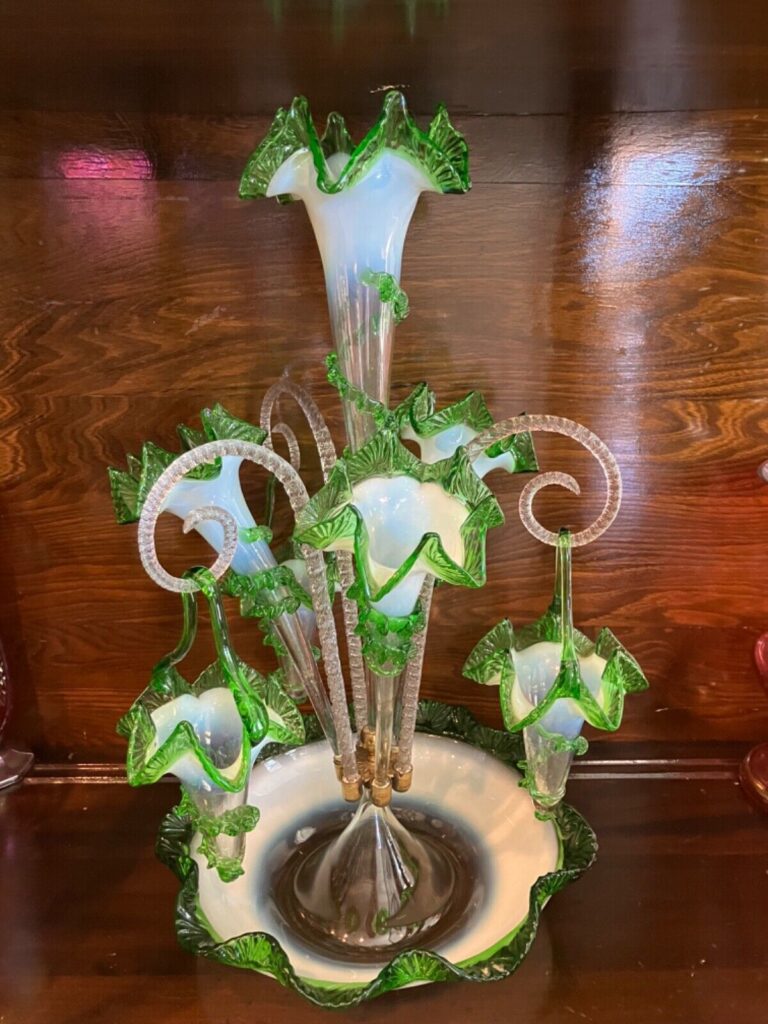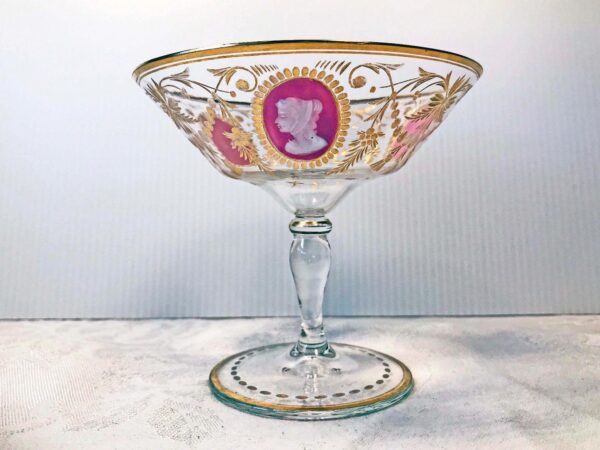#Partying #Gilded #Age #WorthPoint
If you’re watching HBO’s The Gilded Age, you’re well-acquainted with the opulence of the era among society’s elite during the late 1800s. New money or old, even the moderately wealthy and middle class during that period were a lot fancier when it comes to dining and entertaining than most of us tend to be these days. Today, we need an excellent excuse to haul out the good dishes and our best glassware. Hosting a Gilded Age party might be just the excuse you need.
Having a get-together for friends or family—whether you splurge on a grand soirée or host a cocktail party—can be even more fun with a theme, though. If you decide to go lavish and party like it’s the Gilded Age, you’ll likely be doing it on a smaller scale. However, there are still plenty of ways to add a touch of grandeur to your gathering, regardless of its size. From delicious food to antique serving essentials, you can create a memorable experience for your guests.

Hosting a Daytime Affair
Gathering to socialize in the daytime was a big deal to women of prominence back in the day. “Ladies busied themselves by calling on each other and hosting ladies’ luncheons and afternoon tea parties as a way to exchange civilities, gain support for charitable causes, showcase the latest fashions and trends, and meet social obligations,” shares author Becky Libourel Diamond in The Gilded Age Cookbook.
Diamond explains that dishes like chicken salad were eaten with special forks at a luncheon, so adding extra silverware to your place settings is an easy way to fancy things up for lunch guests. Kettledrums—i.e., less formal afternoon or early evening get-togethers where a light meal was served—called for a simple dessert like strawberries and cream. This dessert can easily be served in individual footed dishes or even etched stemware if you inherited your grandmother’s elegant glassware.
Tea parties require refreshments, too. Sandwiches made with cheese spreads and tea cakes akin to shortbreads with nutmeg or cinnamon flavors were popular—recipes are included in The Gilded Age Cookbook. Of course, you can serve tea in a collection of mismatched porcelain cup and saucer sets if you have a collection. Or you can make it more formal using matched cups and plates from your good china cabinet.
Serving Opulent Cocktails
Hosting a cocktail party can be one of the easiest ways to share some Gilded Age extravagance with friends. While you’re at it, you can impart the knowledge that the years following the Civil War were indeed the “Golden Age of Cocktails.” Women tended to only drink at home, but men of standing frequented bars and exclusive clubs in urban areas where bartenders were well-versed in mixing newfangled drinks.
Once again, you can find a way to use some of the stemware you’ve tucked away while foraging flea markets or use your cocktail gathering as an excuse to purchase a set of champagne coupes. Yes, coupes have usurped champagne flutes in a big way these days, and they were also used for serving bubbly during the Gilded Age. Out with the new and in with the old, so to speak.
Cut crystal lowball glasses are also perfect for mixing a Gilded Age drink like a Manhattan or an Old-Fashioned. Martinis were popular during the era as well. Picking a signature cocktail for your party and serving it in beautiful glassware is a wonderful way to spoil your guests.
And, of course, some finger foods from the period can also be served on handsome porcelain appetizer plates, whether old or new. Olives, strawberries with stems, tarts, small slices of bread, cheese, petite chicken drumsticks, and mini cakes were all popular choices in the late 1800s.
Setting the Table
Hosting a dinner party is where you can really get extravagant and emulate the Gilded Age. To do it up right, five courses are in order: oysters and soup, fish/seafood, meat or poultry, salad with cheese or bread and butter, and then a dessert like a charlotte russe made with whipped cream, strawberries, or other fruit, and ladyfingers. To really represent the period, serving the second course using a platter and matching plates with fish décor would lend an authentic flair to the meal, and don’t forget to include oyster forks at your place settings if needed.
Before you even get to the meal, though, setting a beautiful table is in order. A lovely tablecloth should be the foundation, and at least one fresh flower arrangement is appropriate, depending on the size of your table. Candelabras can also be used, and if you have one, an epergne is right at home, holding nuts, dried fruits, and fancy candies either on the table or on a nearby sideboard.
Sending guests home with a party favor is also a nice touch. If you want to follow Mrs. Russell’s lead from the first season of The Gilded Age, you can give your guests a little extra surprise at the dinner table. Tuck a personal gift inside a beautiful napkin tied with ribbon and place it on top of each plate. When your guests untie them, the gifts will be revealed. If you’re dining with collectors, something as simple as a vintage postcard or a small box containing a pair of earrings or cufflinks could suffice. The gesture offers yet another nod to the era if the item is monogrammed.
Regardless of the size of your party, you can incorporate all these elements or pick and choose. Chances are, you’ll come up with something far more elegant than your guests usually experience when getting together with friends these days, thanks to some inspiration from the Gilded Age.
Pamela Siegel is a freelance writer and author who has been educating collectors for more than two decades. In addition to three books on topics relating to antiques and collectibles, she frequently shares her expertise through online writing and articles for print-based publications. Pamela is also the co-founder of Costume Jewelry Collectors Int’l (CJCI) and the proprietor of Chic Antiques by Pamela.
WorthPoint—Discover. Value. Preserve.




